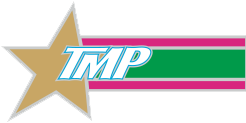An Internship in Review
Formerly a sample of limestone, tested with fiberoptics and strain gauges.
Hey everyone! I want to check in with a few thoughts and feelings - I’ve been off the grid as far as blogs go, and owe you all a better one, but enjoy the inner ramblings of some things I learned during my internship.
For the last 16 months, I’ve been working as a Mechanical Testing and Advanced Computation Lab Engineer in Training for the Queen’s Dept. of Geological Sciences and Engineering as part of the Queen’s Undergraduate Internship Program. My job had a pretty lengthy title, but what it boils down to is that I worked as a lab manager and supervisor specifically for Queen's Geomechanics Group under the supervision of Dr. Mark Diederichs. Major tasks that this included were designing lab improvements, executing various tests on rock and other core samples, as well as monitoring overall lab quality control to meet the standards outlined in our Project Quality Plan and Lab Manual.
The start of a 3D print for a direct shear stand.
As a mechanical engineering student immersed in the field of geomechanics, the name of the game was interdisciplinary work. While there were some tasks at my job that were very mechanical in nature, like using CAD and Arduinos to prototype and build improvements for the testing lab, I spent a lot of time during the COVID-era of my internship processing testing data from previous students which required understanding of different geological concepts (like the quantitative impact of saturation on granite and limestone). There was also times where we were pushing boundaries, like testing samples with fibreoptics, strain gauges and extensometers, all while investigating the errors associated with standard procedures.
A triaxial test setup, complete with Hoek cell.
Something that we need to get used to as engineers, is quality control procedures. During our time as Queen’s engineering students, we are always told to look for potential errors in our work, and this is a skill that you will use in the workplace all the time – except when working, you need to follow up and make those improvements routinely and in a timely manner. I have a lot of practice with that now, since that was one of the main parts of my job. Another thing we learn that prepares you for the working world is self-regulation.
An Ultimate Compression Test - post completion (obviously!)
There are a lot of things I learned in the last 16 months, and I could go on and on about them well past a quick video. But if I must choose one, what I think is most important is that you are not alone in doing what you do. Even during individual projects, there are lot of opportunities to learn from your peers, and no one is afraid to lend a hand. Look through a master’s thesis, for example. No one got through it, start to finish, without asking for help along the way. While you may think you have no idea what you are doing, you are not the only one feeling that way, I promise. I did not know that before, and I am relieved to have found out that it is the case. We ran into a lot of roadblocks along the way, from learning our equipment was fundamentally flawed, to more practical problems like having a hard time lifting a heavy object perfectly level
My very official office label.
Speaking of teamwork, in the workforce you are virtually guaranteed to be working alongside people of different educational backgrounds. Sometimes, these backgrounds conflict, and one of the best ways to manage that is through prioritizing skills. The help that making a simple priority list can do is underrated, and it got us through a lot of tough decisions and helped save time when the clock was not on our side. And of course, fostering teamwork across disciplines virtually requires communication skills, otherwise you will not be on the same page and things can quickly fall apart if that is the case.
A sample of granite before being tested in the Direct Shear machine.
What I learned during my time on internship is that a lot of engineering work boils down to a few fundamental skills: problem-solving, which cannot happen without creativity, as well as communication and prioritizing which are vital to having a strong work environment. That was not surprising to me, per say, but it was certainly reassuring – and interesting that while the technical knowledge was crucial, it meant nothing if you could not analyze a problem and figure out a solution. In the last 16 months, our group had issues with sample preparation, concrete consistency, 3D printer problems, and even some safety hazards with heavy lifting and none of those problems went unsolved – sometimes, the answer was just outside the box.






